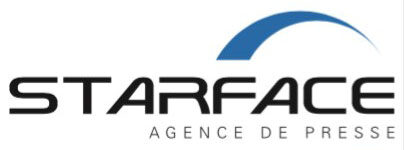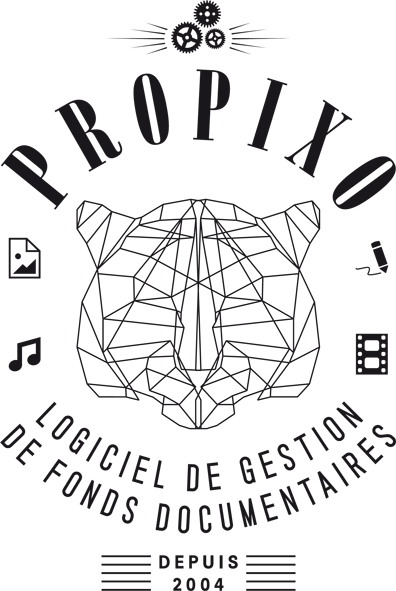Sarah Caron published two books about Pakistan in 2010. ┬½ Pakistan, land of the pure ┬╗, a small book full of major pictures and ┬½ Pakistan ├Ā vif ┬╗ (Pakistan on the edge), a long photo essay about about a country that frightens and fascinates. The result of multiple trips for this photographer who works for some of the worldŌĆÖs most prestigious magazines.
The first time I met Sarah Caron was in Perpignan on Sunday, August 30, 2009 where she had come to Visa Pour lŌĆÖImage to hang ŌĆ£TalibanistanŌĆØ, a series of pictures of Talibans in what is now referred to as the ŌĆ£tribal zonesŌĆØ. The nations that stretch along the ŌĆ£Durand lineŌĆØ, a frontier drawn in 1893 by Sir Mortimer Durand and Abdur Rahman between Afghanistan and Pakistan. She had just returned from her fifth trip to the ŌĆ£land of the pureŌĆØ. Today, as you read this text, she is somewhere, over there.
I was immediately shocked by her personality, ŌĆ£a very shy girlŌĆØ, very surprising for an adventurer of her standing. She was tired, thin, and not very talkative. During dinner with Jean-Pierre Pappis, the director of the Polaris agency that distributes her work, she modestly shared a few words about the difficulties for westerners to work in these forbidden zones, particularly if they are journalists, and even more so for women. Walking through these windy catalan streets on the way to dinner, as if to apologize in advance, Jean-Pierre Pappis discretely confided that ŌĆ£it was very hardŌĆØ. Reading ŌĆ£Pakistan ├Ā vifŌĆØ, I understood that her reality must have been far more dangerous than what I could possibly imagine during this summer festival.PeshawarŌĆÖs Parisian Gir.
Last December, right before the holidays, after having seen and read her books, I wanted to see Sarah Caron again. We had a rendez-vous at the Zimmer caf├®, in ParisŌĆÖ central place du Ch├ótelet, far from Peshawar. At first, I barely recognized her. Was it her, the girl before me drinking a tea? She looked like she had just come out of an office, a pretty Parisian girl, like a business-woman. An anecdote would summarize her astonishing personality.
Right in the middle of ŌĆ£talibanistanŌĆØ. It was after midnight, she quickly had to leave this very dangerous zone. Her driver-fixer stopped in a local village and put a CF98 9mm pistol on her lap, saying ŌĆ£At this time, you shouldnŌĆÖt run into anybody. If anyone should approach, or talk to you, it is not normal, so you shoot. ItŌĆÖs simple, no?ŌĆØ Time was moving very slowly. Her phone rang. Normal, in New York, people were at their desks. At the same time, Sarah saw a few shadows approaching from a 4├Ś4ŌĆ”I donŌĆÖt hear you very well said her editor on the other end of the line. ŌĆ£Is everything alright?ŌĆØ ŌĆ£Everything is fineŌĆØ she answered briefly.
When I mention this part of her book, she smiles, ŌĆ£Oh, I am so lucky to have work during these hard times when so many of my peers are struggling, I am not going to bother my picture editors with my problems.ŌĆØ In 2007, just prior to the assassination of Benazir Bhutto, Sarah Caron was with her in Lahore at Senator KhosaŌĆÖs villa where she was doing a portrait for Time Magazine. After the photo shoot, she was invited to stay for dinner. During the meal, they learned that Benazir Bhutto, and all those gathered, were put under house arrest by President Musharraf. A world exclusive!
The end of December that same year, Sarah Caron had just finished an assignment for the ŌĆ£New York Times MagazineŌĆØ, Jean-Pierre Pappis told her that she could return to Paris for the holidays, like her peers. But she wanted to attend Benazir BhuttoŌĆÖs last meeting in Rawalpindi on December 27, 2007. ŌĆ£Yes, you might be right, but be carefulŌĆ” work with a telephoto lensŌĆ”ŌĆØ advised ŌĆ£JipiŌĆØ. The ŌĆ£blastŌĆØ occurred at 5:25pm, a shooting had delayed her driver. She went directly to the Rawalpindi General Hospital where she took amazing pictures of the injured, the dead, and their close family members, before being dragged away and chased, nearly lynched by a wildly enraged crowd.
An Excellent Bordeaux Vintage
ŌĆ£Sarah Caron? Of course I remember her! So talented!ŌĆØ exclaimed Hugues Vassal, photographer of Edith Piaf and co-founder of the Gamma agency. ŌĆ£A friend told me to go see her exhibition in Bordeaux. It was a long time agoŌĆ” I immediately saw her discerning eye and sent her to Gamma to see Floris de BonnevilleŌĆØ the old master commented emotionally.
ŌĆ£I am so touched that she remembers me. She was leaving for Cuba. I gave her a few old tips.ŌĆØ In 1994, Sarah Caron was working with black and white in Cuba. It was her first ŌĆ£grand reportageŌĆØ since graduating with a degree in Hispanic civilization. She was born in 1970. ŌĆ£I was very much a socio-anthropologist at the timeŌĆØ she comments. ŌĆ£I wasnŌĆÖt yet a journalist, but, as a child, my parents took me to museums all the time. I loved that. I had visual training that way.ŌĆØ ŌĆ£For three years, I ŌĆ£did CubaŌĆØ for Gamma, then I met Christian Caujolle in 1998, and I went to VUŌĆÖ.
I went back to freelance work. Spent one year at Cosmos, one year at Corbis, one year at Getty before Jean-Pierre Pappis called me. We started working together four years ago, and everything is going well sinceŌĆØ. Perpignan, 2009, after dinner, on our way back to the hotel, she explained that she knew she could count on her agency. ŌĆ£When we have a problem on the other side of the world, it is very importantŌĆØ she added with her characteristic discretion.
Michel Puech
Tous nos articles sur Sarah Caron / All reports┬Ā
Book Pakistan / Land of the pure by Sarah Caron, introduction by Alain Genestar et postface by Dimitri Beck (French-English) ŌĆō Jean-Claude Gawsewitch Publications 2010 Le Pakistan ├Ā vif by Sarah Caron, introduction by Caroline Mangez ŌĆō Jean-Claude Gawsewitch Publications 2010
┬ĀDerni├©re r├®vision le 2024/03/13 a 9:44
- « The Stringer »
┬½ Trang Bang, jŌĆÖai toujours lŌĆÖimpression que cŌĆÖest arriv├® hier ┬╗ par David Burnett - 19 d├®cembre 2025 - ┬½ The Stringer ┬╗
LŌĆÖenfer est pav├® de bonnes intentions,
mais ├¦a reste lŌĆÖenfer ! - 4 d├®cembre 2025 - Patrimoine photographique de Sygma
Un jugement hors du bon sens,
enterre un scandale ! - 28 novembre 2025








